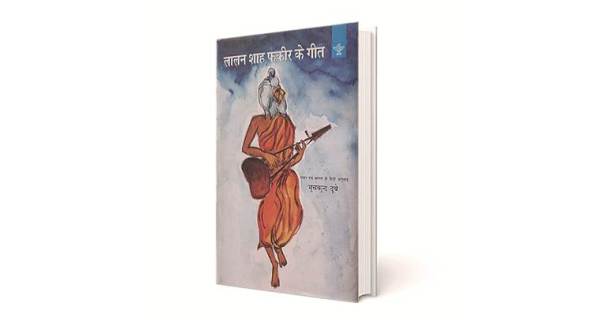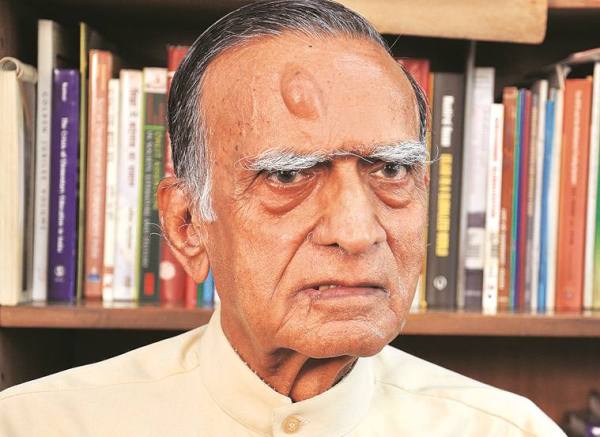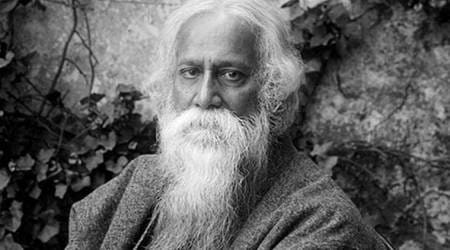Baul-ed Over
Former foreign secretary Muchkund Dubey brings poetry by baul doyen Lalon to Hindi readers.

The cover of Muchkund Dubey ‘s book.
Khanchar bhitor achin pakhi; Jaat gelo jaat gelo or Milon hobe koto dine… Songs about communal tolerance, secularism, and the oneness of man and god among others by baul doyen Lalon Shah Fakir have survived in popular imagination. Generations of Bengali singers from both sides of the border — baul artists to rock musicians — including Purna Das Baul, Paban Das Baul, Parvathy Baul, Saurav Moni, Anusheh Anadil and Arko Mukhaerjee have kept them alive. Rabindranath Tagore is known to be the first to acquire Lalon’s khaata (diary) from his Kushtia akhara and compile 20 songs from it.
Last year, former foreign secretary, and Council for Social Development president, Muchkund Dubey, 85, released a Hindi translation of Lalon’s 105 songs in a book titled Lalon Shah Fakir Ke Geet.
Dubey, who has kept the Persian/Arabic and Sanskrit words as is, for instance, ahar-nishi instead of diva-ratri or din-raat, writes the Bengali verses first, then the Bangla in Devanagari script, followed by the Hindi translation. He is still on the lookout for a Hindi singer to bring his translations to life. Edited excerpts:
Translation requires knowledge of the two languages one is working with. You are not a Bengali, did you learn Bangla?
I knew a little Bangla even before I went to Bangladesh (as the Indian High Commissioner from 1979-82). I come from Jasidih (Jharkhand), where pucca houses belonged to the Bengalis. I learned by hearing them speak and reading shop signboards. In college (in Patna), I picked up Tagore’s Gitanjali. In my head, I was simultaneously translating in Hindi, it was a compulsive habit. I finished three-fourth in 1953, when there were no Hindi verse translations. I read Syed Mujtaba Ali’s stories Deshe Bideshe and Chacha Kahini, Sukanta Bhattacharya’s Chharpatra poems, Bankim Chandra Chattopadhyay’s Krishnakanter Will, to get a feel of the language, how Sanskritised it is. I heard Rabindrasangeet the probationers played at the IAS training school in 1957.
When did you chance upon Lalon?
In New York, when I was with the Indian mission and UN (1968-76), the folk music LPs I bought had Lalon songs. The sheer melody moved me. Later, during my Dhaka posting, the first poet I translated was Shamsur Rahman, best known for his liberation poems, compiled in Bondi Shibir Theke (From the Prisoner’s Camp). My batchmate, Odia poet Ramakanta Rath (former Sahitya Akademi president), while visiting Dhaka, told me that Rahman and Tagore are okay, I should concentrate on Lalon — a classic, in the tradition of the saint-poets of India. Bringing him to Hindi speakers would have greater appeal.
Lalon is big in Bangladesh. Was researching on him easy?
Kazi Nazrul Islam and Lalon Shah Fakir are eulogised. Every household sings Lalon. At the festival in phagun (February) at Lalon’s mazaar in Kushtia, hundreds assemble and sing all night. I pored over Annada Shankar Ray’s essay Lalon O Taar Gaan, Sunil Gangopadhyay’s book Moner Manush, and Tagore’s compilation. I met disciple sadhus, who go out in the afternoons with their ektara and sing, at Lalon’s akhara (he died there aged 116 on October 17, 1890). In Dhaka, there is a Lalon Sadhu Mandal of business executives and Bangla Academy intellectuals, like Symon Zakaria, who helped select the songs, rejecting the ones with flippant/modern words or whose takhallus (poet’s pen name in the last couplet) didn’t say Lalon koye/bole or his guru Sriraj Sai’s name. I had problems looking up the 100 songs that the Sahitya Akademi wanted. Today Abul Ahsan Chowdhury is the most prolific compiler of Lalon’s songs, he released Lalon Samagra in January 2017, but I had submitted my translation in October 2016.
Lalon, a rebel in his verses, flourished. How does Bangladesh treat its rebel artists today?
An obvious example is Taslima Nasreen. She can’t go back, the atrocities committed there and in India are unspeakable. In 2004, Humayun Azad’s novel Pak Sar Jomin Sad Bad got him killed at the Ekushey Boi Mela. We are all going down, at a very fast pace.
Amid hate crimes and mob lynchings, do writings by mystics like Kabir and Lalon become pertinent?
In the current situation of decline of values, and drift towards violence and serving self-interests, what is required is a social resurgence. Which is why I want these songs to be sung in Hindi. I got Bangladeshi singer Farida Parveen to sing some, but her Hindi pronunciation is unintelligible. Kabir has been sung by Pt Jasraj and Kumar Gandharva, so I contacted Ajoy Chakrabarty, who seemed interested. And, Rahul Ram (of Indian Ocean), who said he alone can’t sing six songs in an album, but it’s possible if six bands come together and contribute a song each.
For all the latest Lifestyle News, download Indian Express App






















 Muchkund Dubey
Muchkund Dubey


No hay comentarios:
Publicar un comentario